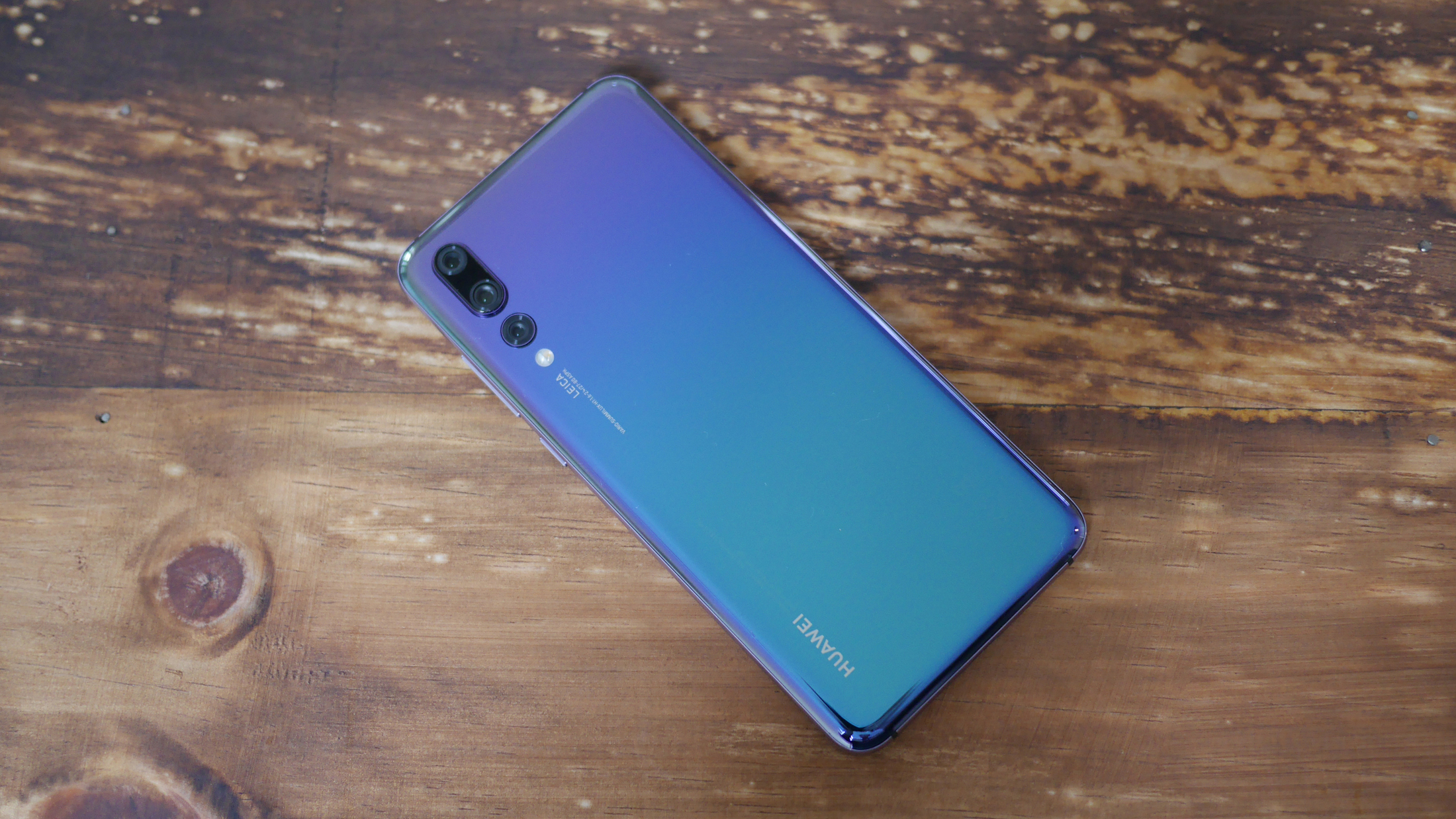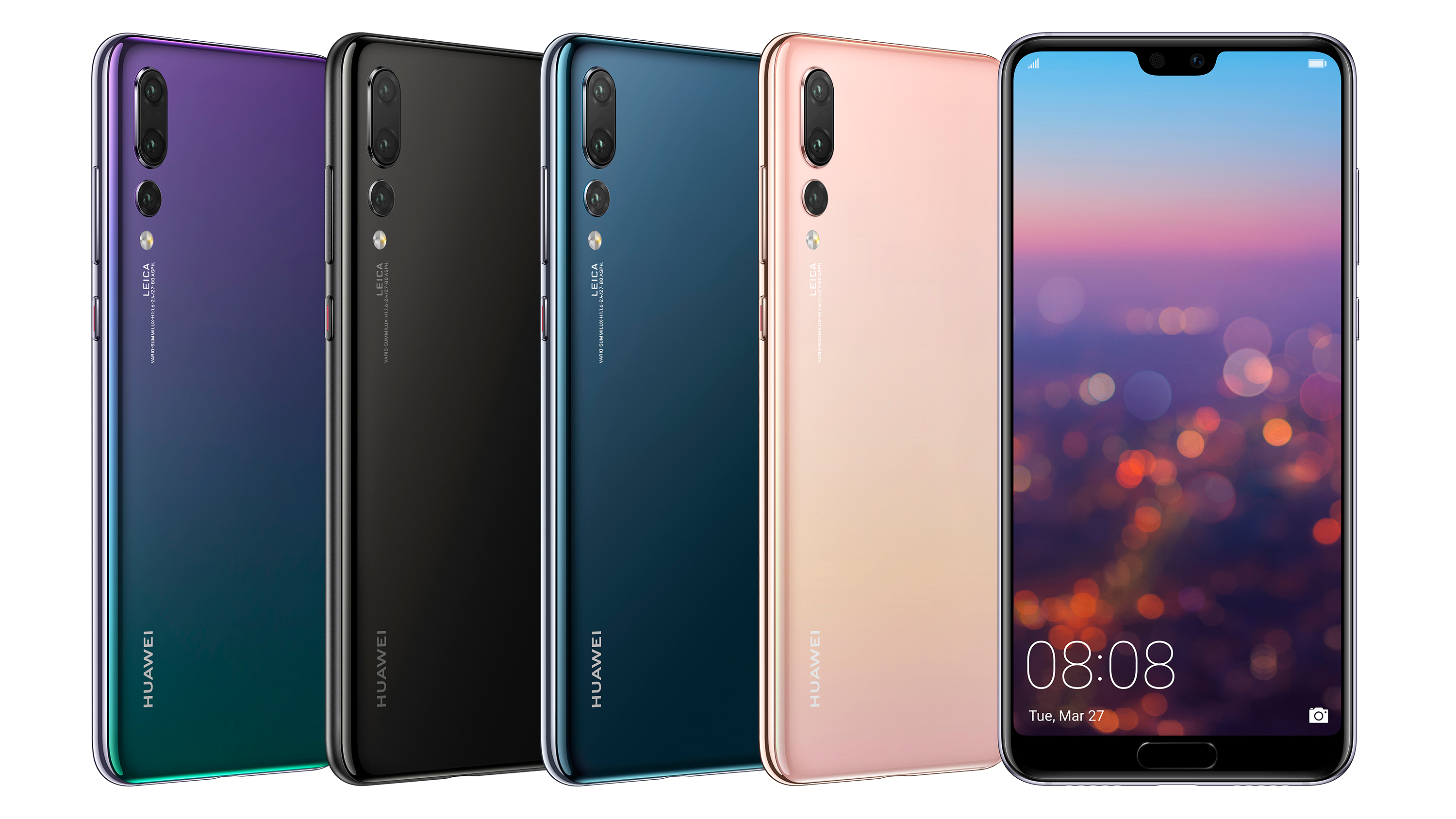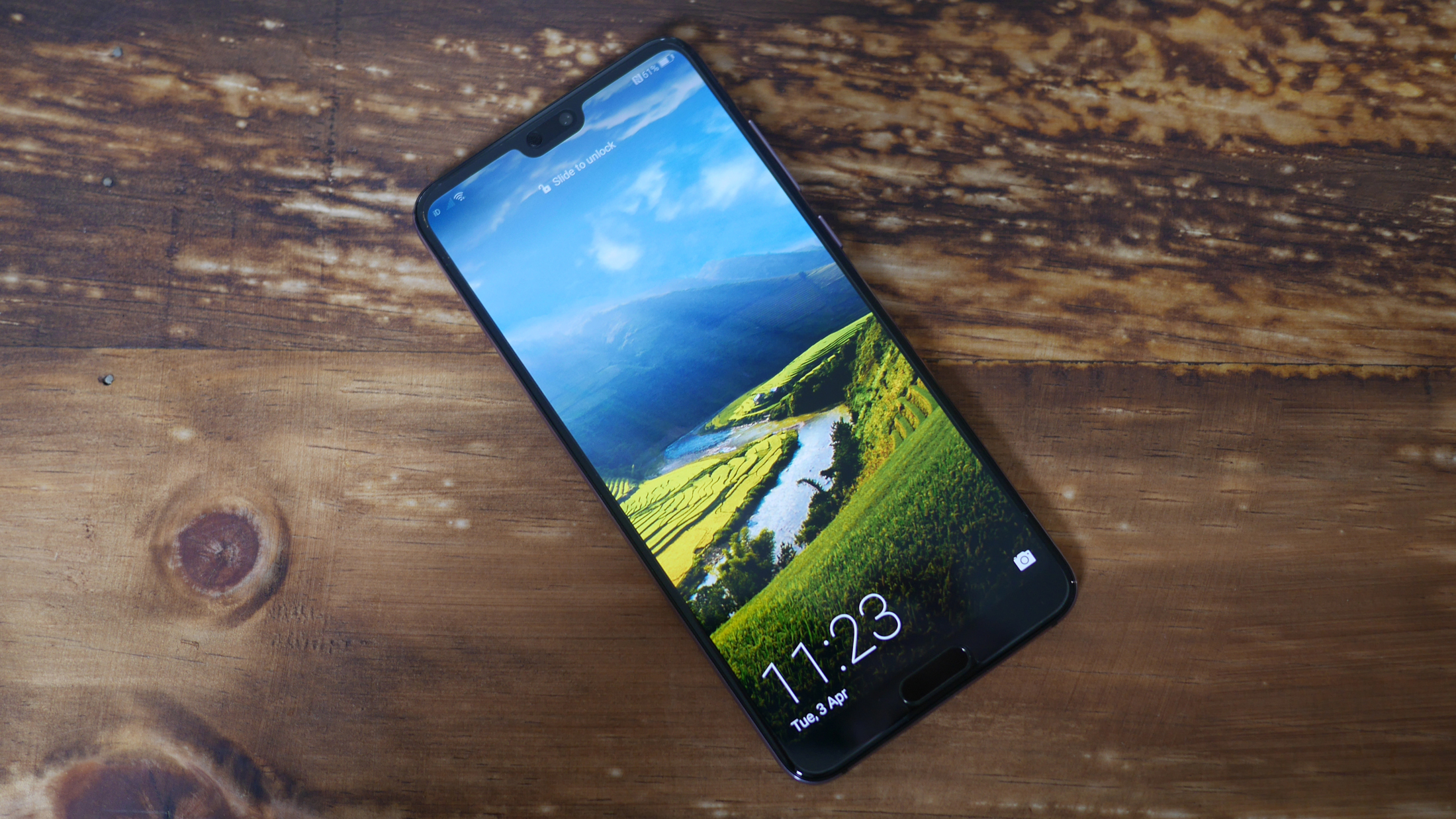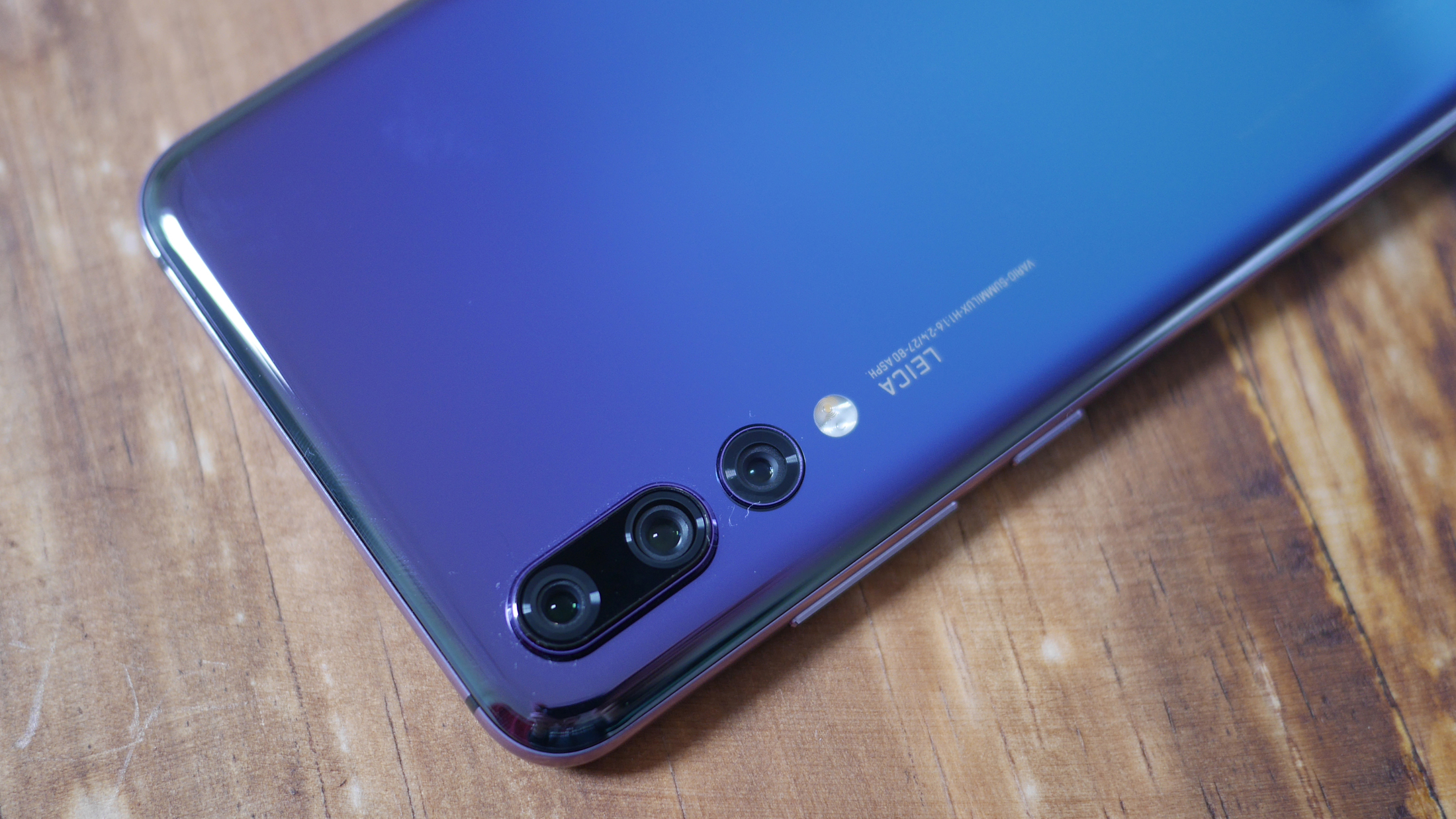Huawei P20 Pro review: Is three cameras the magic number?
This premium Android phone has an iPhone X-style notch and not one, not two, but three rear cameras!


The P20 Pro is an attractive handset with premium build quality, top specs, and improved although, still not perfect software. It really puts a cat among the pigeons. Its unoriginal design might people off, but we don't think it should.
-
+
Premium design
-
+
Triple camera system
-
+
Improved software
-
+
Great battery life
-
-
Design lacks originality
-
-
UI still isn't perfect
Why you can trust T3

Huawei P20 Pro Specs

Dimensions: 155 x 73.9 x 7.8 mm
Weight: 180 g
Processor: Kirin 970
RAM: 6 GB
Storage: 128 GB
Display: 6.1", 18.7:9 Full HD+ (1080 x 2244)
Rear camera: Triple 40 MP (f/1.8) RGB + 20 MP (f/1.6) Mono
+ 8 MP (f/2.4) Zoom
Front camera: 24 MP (F2.0)
Battery: 4,000 mAh
OS: Android 8.1 Oreo
Huawei has been really impressing us with its P-range of smartphones for a while now and the P20 Pro is the latest entry into the series.
The Chinese-brand has shunned its budget image and carved out a reputation for offering Apple-like hardware with Android software at a premium price that puts it up there with the Samsung Galaxy S9 and other flagship Android phones.
I know what you're thinking – why is it called the P20 and not the P11?
Well, it's because this handset is such a significant update that merely going from P10 to P11 doesn't do it justice.
- These are the best smartphones
- Huawei P30 Pro review
- Huawei P30 review
What innovations does Huawei bring to the table? The headline feature here is the triple lens camera, which is exclusive to the Pro model. It packs in a RGB, monochrome, and telephoto sensor to improve the smartphone's image taking versatility.
The Huawei also has a few stunning new "gradient" colour finishes, that shift colour in different light. It's pretty unique.
- Make sure you read T3's review of the smaller Huawei P20
There's no getting around it, though, the Huawei P20 Pro has a strong whiff of iPhone X about it, but does that detract from an otherwise brilliant smartphone? I've been using it to find out.
Get all the latest news, reviews, deals and buying guides on gorgeous tech, home and active products from the T3 experts

Huawei P20 Pro review: Design
The Pro is the larger phone in Huawei's new lineup, with a 6.1-inch screen compared to the P20's 5.8-inch screen.
In previous years, a device with a 6.1-inch display would be too much for me, as I often prefer smaller phones, but Huawei has really nailed the ergonomics here. The P20 Pro is smaller than the Mate 10 but squeezes in a larger screen.
Huawei is good at making phones, and the P20 Pro feels just as well made as any other premium smartphone out there.
The glass back is smooth and solid, while the metal edges are pleasingly chamfered and tactile.
I find it much more pleasant to hold than the Samsung Galaxy S9, and it feels more durable too, so it's a great premium alternative if you have similar S9-worries.
Huawei has introduced two "gradient" colourways, which shift colour depending on the light. There's "Twilight", which flows between black and petrol blue, and "Pink Gold", which transitions between, err, pink and gold.

They're really nice options, and would be T3's pick of the bunch.
Of course, bezels have been minimised as much as possible on this device – there's even a notch around the front camera and speaker – á la iPhone X.
It is worth noting, for those who don't want an iPhone X lookalike, there is a software option to hide the notch. This creates a constant black bar at the top of the screen.
Personally, I don't find it as intrusive as the iPhone's notch as the bar doesn't invade content, such as webpages, maps, or images, just the Android Navigation bar.
The only annoying thing about the notch is that Huawei has chosen to put some permanent icons on the left side of the notch, which can easily be mistaken for message notifications.
Unlike the iPhone X, there's a sizeable bezel at the bottom of the display, with enough space for a home button underneath the screen.
At first I thought Huawei's decision to retain a front-facing sensor was strange, when others have moved it underneath the camera, or abolished it altogether.
But after using the device I have to say it makes complete sense. The fingerprint sensor is one of the fastest and most accurate out there, and is much easier to locate than the rear-facing sensors.
It also allows you to remove Android's software navigation keys, replace it with Huawei's 'Navigation Key' home button, and use more of the display for content.

Huawei P20 Pro review: FEATURES AND USABILITY
While we're on the subject of unlocking the P20 Pro, it's worth noting that in addition to the fingerprint sensor, Huawei has included face unlock.
I was amazed at how quickly and accurately this system works. Unlocking the device is almost instantaneous, and it works seemingly impossible lighting conditions.
It still does fail to recognise me occasionally (so it's nice to have the fingerprint sensor as a backup), and it only relies on the front-facing camera, so it's not as secure as Apple's FaceID.
The big selling point with the Huawei P20 Pro is the triple lens, Leica branded, camera. Yep, this smartphone is packing not one, not two, but three lenses.
The innovative system combines a telephoto lens, colour (RGB) sensor, and a monochrome sensor.
All sensors combined, the P20 Pro has a massive 92-megapixels.

Breaking that down, it's 24MP for the front-facing camera, 8MP for the telephoto, a massive 40MP for the RGB, and 20MP for the monochrome.
If you leave the camera in its default settings, you'll get 10MP images, though, because Huawei combines four pixels into one, to produce sharper, cleaner images. It's very smart, and similar to what Nokia did a while ago with its PureView camera.
The P20 Pro’s main camera not only packs a massive resolution, it's also massive in size, measruing in at 1/1.7 of an inch.
For comparison, that’s more than double what you’d get with a Galaxy S9 or an iPhone X.
It also captures a pixels measuring 2μm, which again, it much larger than the competition.
The telephoto lens has optical image stabilisation (OIS), but the other lenses use Huawei's new AIS "Artificial Intelligence Stabilisation". This even works on long exposure night shots, which can be taken hand held with a shutter open for eight seconds. That's impressive.
All of that results in a camera which is shockingly good in low light conditions, capable of pulling out noise-free details even I couldn't see with my naked eye.
Huawei has also worked on the speed of the autofocus. The P20 Pro uses four different systems for quick and accurate focus. It even has predictive focus, to keep moving objects pin sharp.
The images still have a very distinctive "Huawei look", which I'd define as slightly over exposed, very sharp, and with neutral colours. It's pleasing, and refreshing compared to the over saturated images from some rivals, most notably the Samsung Galaxy S9.
To ensure you get the best image every time, the P20 Pro features "Master AI", an image recognition system which instantly recognises what you're shooting and adjusts the image processing accordingly.
For example, the P20 Pro will know when you're taking a picture of a flower and boost the saturation, or, if you're taking a portrait, it'll smooth the skin and blue the background automatically.
It's a smart system, even capable of telling the difference between dogs and cats, or different types of cuisine.
It can get a bit carried away sometimes, though, and the processing can be a bit over the top, although not enough for me to turn it off.

Is it as good as T3's current favourite, the Google Pixel 2? It comes down to taste.
In terms of operation, the Pixel 2 is more like a point and shoot camera, while the P20 Pro is more like a DSLR, where you need to play with the settings and modes to get the most out of it.
You certainly won't be disappointed with the P20 Pro, and I'd say it bests the iPhone X and Samsung Galaxy S9.
Huawei P20 Pro REVIEW: PERFORMANCE
All of that image processing sounds like it might take a long time, but it doesn't thanks to octa-core Kirin 970, NPU, and 6GB of RAM.
In fact, everything, from opening apps to watching videos, is super responsive.
The Huawei P20 Pro runs Android Oreo 8.1 with EMUI 8.1 on top. It's improved greatly over previous versions, but still not quite as attractive as stock Android.
Huawei phones usually standup pretty well over time as well – so we'll let you know how we get on with this one.
The 6.1-inch OLED display is excellent, striking a good balance between natural and oversaturated. It is only FHD+ resolution, compared to the QHD display on the S9, but you'll only notice the lack of pixels when side-by-side.
Ultimately, it's sharp, bright, and pleasing to look at.

The battery is massive 4,000mAh and offers Huawei's fast charging capabilities.
Battery life has been seriously impressive during my review. I often find myself we ending a day with 50-percent of life left.
I'm not sure how they managed it in a phone that measures just 7.8 mm thick.
The P20 Pro is also outstanding in other, more boring, often overlooked areas, such as audio and wireless performance.
Not only is paring Bluetooth headphones and speakers incredibly reliable, the P20 Pro also manages to get 4G signal where others usually fail (such as my blackspots in rural areas around my home).
If you don't have a Bluetooth speaker to connect to, the built-in speakers are loud and clear.
Basically, it's an incredibly strong performer in pretty much every category.
Huawei P20 Pro review: verdict
The Huawei P20 Pro is a very impressive smartphone. It's powerful, refined, fast, stylish and, most importantly of all, desirable.
The biggest criticism that can be drawn against it is that the handset looks like an iPhone X, and people may just dismiss it instantly because of that.
We don't think you should, because the Huawei P20 Pro is a fantastic smartphone.
The Huawei P20 Pro costs £799 SIM free, but you can check out the best deals below:

As the Style and Travel Editor at T3, Spencer covers everything from clothes to cars and watches to hotels. Everything that's cool, stylish, and interesting, basically. He's been a part of T3 for over seven years, and in that time covered every industry event known to man, from CES and MWC to the Geneva Motorshow and Baselworld. When he's driving up and down the country in search of the greatest driving roads, he can be found messing around on an electric scooter, playing with luxury watches, or testing the latest fragrances.